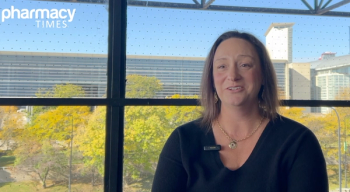
Decision to Receive Pneumococcal Vaccine Among Older Adults Is Multi-Factorial, Influenced by Multidimensional Interventions
Key Takeaways
- Pneumococcal vaccination uptake is influenced by predisposing, enabling, and reinforcing factors, as per Andersen’s behavioral model.
- Key predisposing factors include perceived severity, health consciousness, and age, while enabling factors involve education and cost.
Commonly cited factors influencing uptake of pneumococcal vaccination included knowledge of pneumococcal disease and vaccine benefits, recommendations from health authorities, and perceived risk of infection.
Multidimensional, cross-sector barrier-specific strategies are essential to raising pneumococcal vaccination (PV) among older adults, with their decision to receive a vaccine dependent on complex factors including personal characteristics, available resources, and external support.1
For decades, pneumococcal vaccines have provided powerful immunity against pneumococcal diseases (PD), which can cause significant morbidity. Most recently, new 21-valent conjugate vaccines were studied and
Despite the significant benefits of PV, many older adults who stand to benefit the most from the increased protection remain unvaccinated. Combined with the onset of the COVID-19 pandemic, there is now a renewed interest in evaluating PV uptake and whether strategies employed to promote vaccination against COVID-19 could be useful in promoting PV. In this paper, the investigators sought to provide a review of the determinants of PV uptake among adults 65 years and older.1,2
A total of 27 full-text stories that fulfilled the eligibility criteria were selected for the review. Identified variables that were found to impact PV choice were mapped out according to the core aspects of the Andersen’s behavioral model of health services use, consisting of predisposing factors, enabling factors, and reinforcing or need factors. Among the selected studies, sample sizes ranged from 16 to 2,054,463, while older adults who participated had a mean age of 67.1 to 79.1 years. PV rates were between 0.5% and 75.0% across the trials.1
Regarding predisposing factors, 24 studies (88.9%) reported on these characteristics. Three main determinants and 17 sub-factors were identified by the study authors, with the most prominent sub-factors being perceived severity and risk, susceptibility of being infected with PD (n = 13, 48.1%); health consciousness and awareness of guidelines and importance of PV (n = 10; 37.0%); and age (n = 9; 33.3%).1
Enabling factors that were associated with PV reception were analyzed in 22 of the 27 studies (81.5%), with 4 determinants and 15 sub-factors identified. Frequently mentioned sub-factors included knowledge or education regarding PD and PV (n = 15; 55.6%); history of immunizations or recommendations (n = 8; 29.6%); and cost of PV or applicability (n = 8; 29.6%), according to the study authors.1
A total of 19 studies explored reinforcing factors, which are those that accentuate the need and drive action to utilize or ignore a health service. Four determinants and 19 sub-factors comprised this section, with common factors including recommendations from a health care provider or government (n = 14; 51.9%); influence of persuasion from peers in inner circle (n = 11; 40.7%); perception of PV’s safety and related adverse effects (n = 10; 37.0%); belief that PV is beneficial to self and others (n = 10; 37.0%); and informational prompts (n = 10; 37.0%).1
Investigators from the included studies proposed strategies to increase PV uptake, matched to the domains of Andersen’s model. Many of the suggested approaches were national-level initiatives purposed to strengthen reinforcing factors associated with PV reception. Widely advocated interventions included new measures to equip health care providers with adequate PV knowledge (n = 9; 33.3%), public health education (n = 8; 29.6%), and capitalization of information transmission platforms (n = 5; 18.5%).1
Knowledge of the factors that influence PV among older adults will be critical for pharmacists and other treatment providers to properly guide and educate patients who would benefit from vaccination. Multipronged interventions should be introduced to help achieve immunity against PD across the population.1
“Multidimensional interventions that amalgamate individual and systemic cross-sector strategies, relevant to the specified context, are imperative to simultaneously eradicate barriers and augment facilitators to raise universal PV coverage,” the study authors concluded.1
REFERENCES
1. Wan SW, Choe L, Daariin ABER, et al. Determinants of pneumococcal vaccination among older adults: A scoping review. Public Health. 2024;237:245-260. doi:10.1016/j.puhe.2024.10.008
2. Halpern L. Pneumococcal 21-valent conjugate vaccine generates positive response in adults at increased risk of disease. Pharmacy Times. Published October 21, 2024. Accessed November 20, 2024. https://www.pharmacytimes.com/view/pneumococcal-21-valent-conjugate-vaccine-generates-positive-response-in-adults-at-increased-risk-of-disease
3. Gallagher A. ACIP lowers pneumococcal vaccination recommendation to age 50. Pharmacy Times. Published October 24, 2024. Accessed November 20, 2024. https://www.pharmacytimes.com/view/acip-lowers-pneumococcal-vaccination-recommendation-to-age-50
Newsletter
Stay informed on drug updates, treatment guidelines, and pharmacy practice trends—subscribe to Pharmacy Times for weekly clinical insights.























































































































































































































